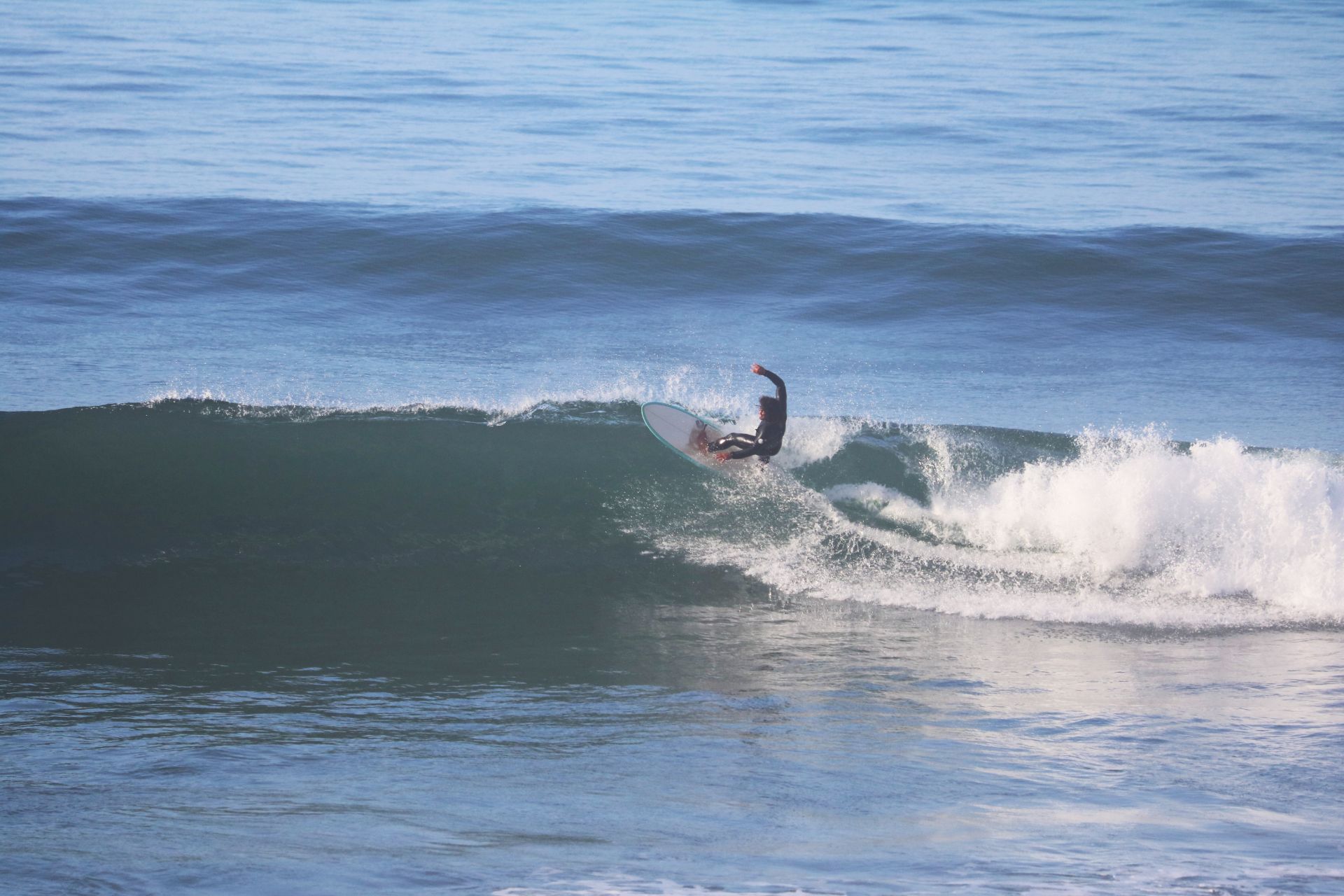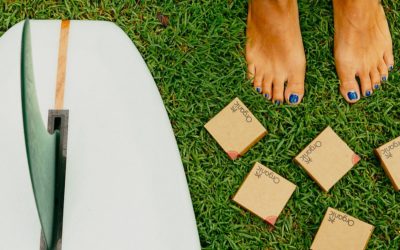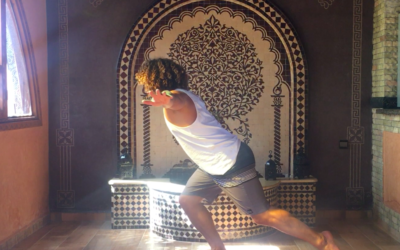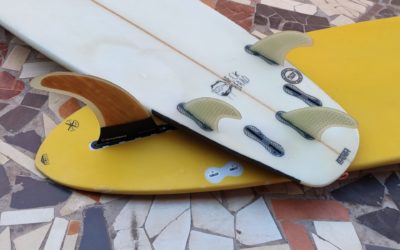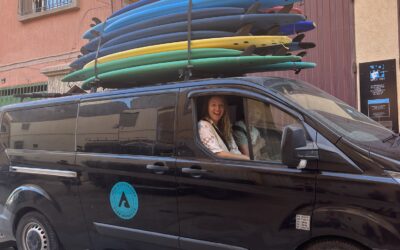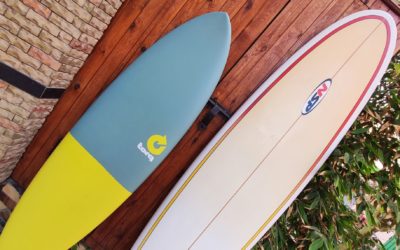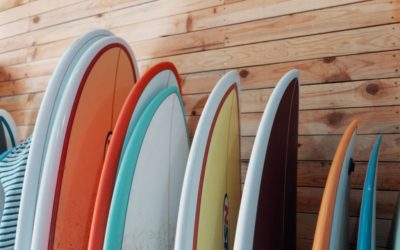Have you ever found yourself in a surf chat and understood one word out of three? If so, this article is for you. We’ve collected as many words from the surfing A-Z as possible so that you can talk about your future sessions sounding like a pro!
About the surfboard
Foot/inch: Unit of measurement used to count the length/width/thickness of a surfboard (1 foot = 30.4cm / 1 inch = 2.54cm). Note that one foot contains 12 inches.
Rocker: The curve of a surfboard, in the shape of a banana, from its nose to its tail.
Concave: shape of the underside of the board, across the width. The underside can be flat, hollowed out, or even curved, depending on the desired gliding effect.
Fins: piece ensuring the directional stability of a surfboard, attached to the bottom of a board.
Wax: paraffin-like material, to be spread on the surfboard to provide grip.
Tail: back of the board
Nose: front of the board
Leash: cord that connects the surfer to the board.
Rails: edges of the board.
Shape: general shape of the board.
Shaper: craftsman who creates surfboards and takes care of the shape of the board up to the finishing details.Glazing: the stage in the manufacture of the board where the craftsman uses fabric and resin to create a strong, waterproof outer layer.
To read more on board types, click here.
About the glide, or the ride
Take off: action of getting up on the board.
Turn: literally turn (on the wave). Most surfing manoeuvres are variations of turns.
Cut back: 180° turn to return to the powerful part of the wave.
Barrel: when a wave breaks by projecting the lip, creating a water tunnel for a short time.
Air: aerial figure, where the surfer and his board take off from the wave.
Front / back side: front side indicates that you are riding on the front of the wave. Back side indicates that you are sailing with your back to the wave.
Stance regular / goofy: a regular surfer will surf with his right foot at the back of the board, and vice versa for a goofy.
About weather conditions
Soft / hollow wave: a soft wave has difficulty in forming well and will have a very slight slope and therefore little power. Conversely, a hollow wave is faster and projects forward.
Shoulder: The shoulder of the wave is the unbroken part of the wave. This is where the surfer has to move.
Lip: this is the upper part of the wave that is ready to break or is breaking.
Offshore / onshore wind: an offshore wind comes from land and will therefore tend to lift the waves. An onshore wind comes from the sea and will flatten the waves, degrading the surfing conditions.
Swell: Undulatory movement of great amplitude which agitates the surface of the sea by forming waves whose crests are rounded without breaking.
Wave: moment when the swell meets an obstacle (a seabed to create possible waves to surf) and breaks.
Period: spacing between each wave of the swell (in seconds). The higher the period, the more time the waves have to be well formed and powerful.
Close-out: wave that breaks in one go, without leaving a shoulder that can be used in surfing.
Right / left: a right is a wave that rolls to the right from the point of view of a person in the water, looking at the coast or beach. From the beach the right therefore rolls to the left. Conversely for the left.
Back-wash: agitation of the sea surface, resulting from the interference of the swell and its reflection against a coastline or against obstacles it encounters.
About the spot
Spot: place where waves are suitable for surfing.
Beachbreak: spot where the wave breaks over sand. The spot is therefore quite sensitive to currents, strong tides and storms.
Reefbreak: spot where the wave breaks over a hard bottom (rock, coral…). The spot is therefore not very sensitive to natural sea movements.
Pointbreak: spot where the waves can break on sand or rock. They always start from the same point which can be materialised by a rocky point, a sand overhang, a jetty or even the hull of a stranded ship.
Shorebreak: a breaking wave close to the edge of the beach, on little bottom.

